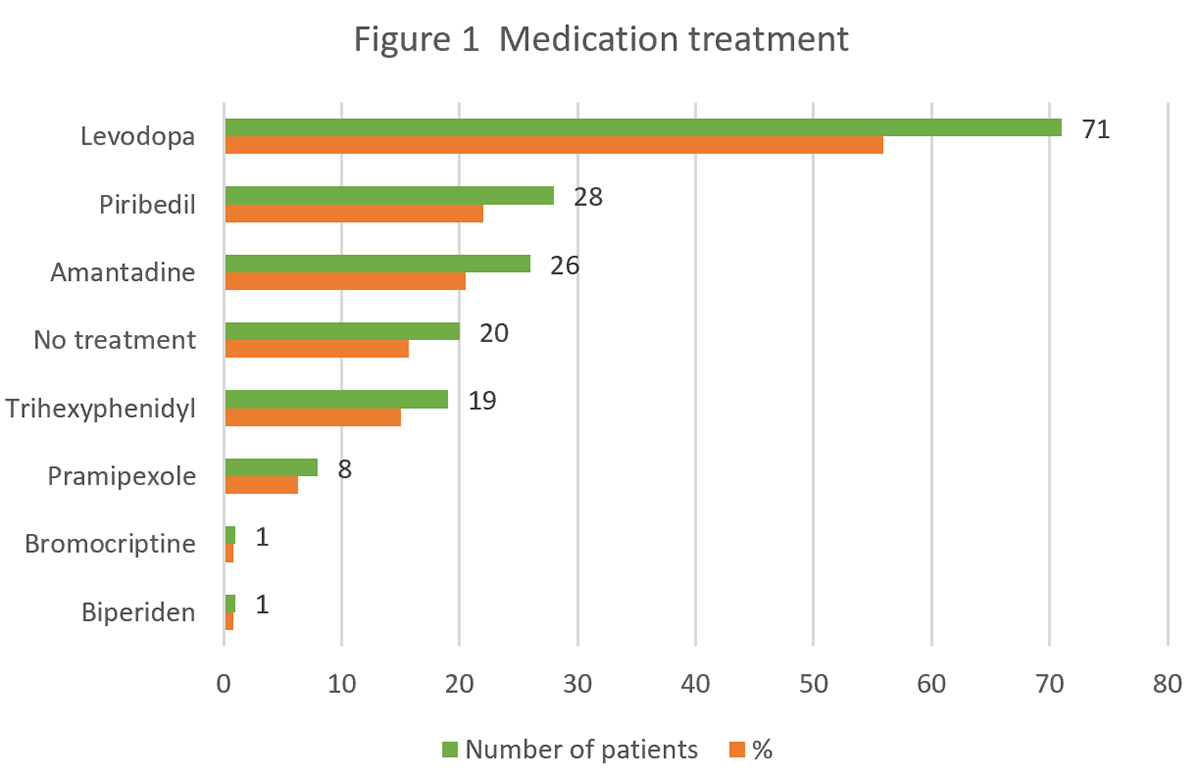Session Information
Date: Tuesday, September 24, 2019
Session Title: Parkinsonisms and Parkinson-Plus
Session Time: 1:45pm-3:15pm
Location: Agora 3 West, Level 3
Objective: Aim of the study is to determine frequency and overall picture of disease characteristics, evaluation and treatment of patients with Parkinson’s disease (PD) and parkinsonian syndromes (PS) at third-level university based hospital over the period of 2 years in Kyrgyzstan, by reviewing medical records.
Background: The information on prevalence and frequency of PD and PS in Central Asia is very limited.
Method: The staff of two neurology departments are eight neurologists with second, first and highest local category of specialization and no movement disorders (MD) training. Medical records are paper based general forms, as there is still no electronic data base recording system. Neurologist with MD training reviewed medical records of patients with PD and PS of January 2016-December 2017 period. Age, gender, age at onset, clinical features, diagnostic evaluation, and treatment, were extracted and filled in a standardized form, created for the study.
Results: 127 (55.8%) of MD patients were referred from primary clinics over the country with initial diagnosis of PD in 52 (40.9%) cases and PS in 75 (59.1%). There were 62 males and 65 females with mean age of 60.8±10.9 years (range, 34-91). Mean age at onset was 55.9 years (29-86) and median duration of disease by the visit was 4.71 years (several months to 21 years). Only in 55 (43.3%) cases PD was concluded as final diagnosis. 72 patients (56.7%) were diagnosed with PS: vascular parkinsonism (76.4%), and not identified parkinsonism (23.6%). There was no case with diagnosed atypical parkinsonism (AT), yet at least 29 patients had to be considered for AT due to disease characteristics and history. Brain MRI obtained in 55/127 (43.3%). 71 patients (55.9%) were treated with levodopa (in combination bencerazide/carbidopa and entacapone) with typical dose of 250 mg per day, 20 patients (15.7%) were not treated at all. Figure 1 shows information on other medications. There was no documented information on dyskinesia and motor fluctuations. Only in 27.6% Hoehn Yahr scale was applied. Records of parkinsonian features examination were insufficient, non-motor symptoms were not taken into consideration and treated.
Conclusion: Low level of diagnosed PD and high level of not identified PS, along with other data, is a clear indication of high rate of inadequate diagnosis and treatment of MD patients, proving necessity to continue the work on improvement of knowledge and skills of local neurologists.
To cite this abstract in AMA style:
C. Shambetova. Prevalence of Parkinson’s disease and parkinsonism in Kyrgyzstan [abstract]. Mov Disord. 2019; 34 (suppl 2). https://www.mdsabstracts.org/abstract/prevalence-of-parkinsons-disease-and-parkinsonism-in-kyrgyzstan/. Accessed April 21, 2025.« Back to 2019 International Congress
MDS Abstracts - https://www.mdsabstracts.org/abstract/prevalence-of-parkinsons-disease-and-parkinsonism-in-kyrgyzstan/

